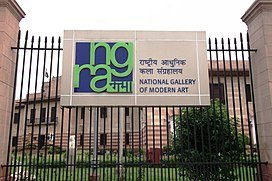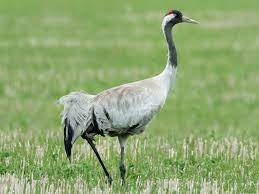Blog
May 17th Current Affairs
- May 17, 2021
- Posted by: admin
- Category: Culture Current Affairs Daily News Defense & Security Disaster Management Economy Education Environment & Ecology Ethics Geography Governance Health History International Relation Persons in News Polity Science & Technology Social Issues Sports Uncategorized UPSC Notification Videos
1. Steps taken to ensure availability of fertilizers to farmers at subsidized prices.

IN NEWS:
- Government of India is making available fertilizers, namely Urea and 22 grades of Phosphatic & Potassic (P&K) fertilizers including Di-ammonium Phosphate (DAP), Muriate of Potash (MOP)& Single Superphosphate (SSP) to farmers at subsidized prices through fertilizer manufacturers/ importers.
- The subsidy on P&K fertilizers is being governed by NBS Scheme.
KEY POINTS
- Subsidy is released to fertilizer companies as per Nutrient based subsidy rates so that they can make available fertilizers to farmers at affordable price.
- In last few months, the international prices of raw materials of DAP and other P&K fertilizers have increased sharply.
- Prices of finished DAP etc. in international market have also increased proportionately.
- Despite this sharp increase, DAP prices in India were not increased by the companies till last month. However, some companies have now increased DAP price.
- Government of India is fully aware of the situation and it is being closely monitored at very high level in the Government.
- Government is fully sensitive to the concerns of farmers also and is already taking steps to tackle the situation so that farming community can be saved from the effects of this price rise of P&K fertilizers (including DAP).
- On the pricing front of DAP, the Government has already asked all the fertilizer companies to sell their old stocks of DAP etc. at the old prices only.
- Additionally, Government of India is also considering the subsidy rates to offset the rise in international prices of raw materials of P&K Fertilizers and DAP in order to support the farmers cause and lessen the financial burden on them.
SOURCE:PIB
2. NAIMISHA 2021

IN NEWS:
National Gallery of Modern Art to start month long online summer workshop- NAIMISHA 2021 from 17th May.
KEY POINTS:
- The National Gallery of Modern Art, New Delhi is creating a virtual museum space through its online summer programme NAIMISHA 2021.
- This unique art fiesta will provide a platform to create and engage with the arts.
- The current duration of the programme is 17th May to 13th June 2021.
- The planned workshops and hosts of related events are expected to spark imagination, creativity and interest in visual and other related arts.
- The idea behind designing and delivering online interactive programmes is to provide a creative outlet to children, and indeed all interested adults.
- Workshops have been designed on painting, sculpture, print making and videography and puppeteering and other related arts.
- The NGMA NAIMISHA portal will also stream a curated film festival for the participants from NGMA’s private collection.
- A session on storytelling and performances will be held every Friday.
- During the opening week, maestro Saskia Rao – de Haas, iconic cellist and composer, will regale participants with her music and stories. She will be accompanied by her fifteen-year-old gifted pianist son.
- The exhibition of selected artworks from NAIMISHA 2021 will be displayed on NGMA’s website and SO-HAM the cultural media platform of NGMA for public viewing soon.
SOURCE:PIB
3. Solar Energy Corporation of India

IN NEWS:
SECI Organizes Online Yoga Workshop for Employees
KEY POINTS:
- In view of the COVID-19 pandemic, Solar Energy Corporation of India , a Central Public Sector Undertaking under Ministry of New and Renewable Energy has arranged a Yoga workshop for all its employees.
- The benefits of yoga is known to increase immunity and improve overall well-being. Special online yoga sessions have been arranged with a view to engage the employees in a group activity while providing for their health, stress management and fitness .
SECI:
- Solar Energy Corporation of India Ltd (SECI) is a CPSU under the administrative control of the Ministry of New and Renewable Energy (MNRE),
- Set up on 20th September, 2011
- AIM:To facilitate the implementation of JNNSM and achievement of targets set therein. It is the only CPSU dedicated to the solar energy sector.
OBJECTIVES:
- Carry on busines’s of generation, forecasting, purchasing, producing, manufacturing, importing, exporting, exchanging, selling and trading in power products and services in India and abroad
- Own, manage, investigate, plan, promote, develop, design, construction, operation, maintenance, renovation, modernization of power projects in solar, on-shore/off-shore wind, geo-thermal, tidal, bio-gas, bio-mass, small hydro and other renewable energy sources in India and abroad
- Plan and execute an integrated programme on development and implementation of renewable energy projects
- Plan, develop, maintain, lease, hire, manage solar parks, infrastructure facilities, and all related ancillary facilities & services in India and abroad.
SOURCE:PIB
4. Common crane

IN NEWS:
- Common crane was recently spotted in Ireland.
- It had disappeared more than three centuries ago from Ireland.
- The bird is part of its folklore and was a popular pet during medieval times.
Key takeaways
- A pair of cranes was spotted last year on a restored peat bog
- Peat bog is a type of wetland that is mostly found in northern latitude countries.
- The birds are in Ireland’s Midlands region, but their exact location has been kept secret to protect them.
- Cranes stand at 4 feet tall with a wingspan of over 7 feet, and used to be the largest birds in Ireland.
- Although they were once common, the destruction of their habitat caused them to disappear around the 16th and 17th century.
IMPORTANT INFORMATION:
Why is bog restoration important?
- Bogs (also called quagmires) are soft, spongy wetlands that accumulate peat– a fossil fuel that is used for heating homes and businesses in northern Europe. They are formed in northern climates, and take thousands of years to develop.
- Bogs also act as carbon sinks, sequestering around 200 million tons of carbon from the environment in Siberia and Scandinavia.
- For centuries, however, they have been drained for extracting peat or for development, leading to the destruction of their delicate ecosystems, including damage to species such as cranes that breed here.
SOURCE:IE
5. MISSION COVID SURAKSHA.

In news:
Under Atmanirbhar Bharat 3.0 Mission COVID Suraksha was announced by the Government of India, to accelerate the development and production of Indigenous COVID Vaccines.
KEY POINTS:
- This is being implemented by Biotechnology Industry Research Assistance Council (BIRAC), New Delhi.
- To augment the capacity of Indigenous production of Covaxin under the Mission, the Department of Biotechnology in April, 2021 provided financial support as Grant to vaccine manufacturing facilities for enhanced production capacities, which is expected to reach more than 10 crore doses per month by September, 2021.
Important Info :
About BIRAC:
Biotechnology Industry Research Assistance Council (BIRAC) is a not-for-profit Section 8, Schedule B, Public Sector Enterprise, set up by Department of Biotechnology (DBT).
Mission Covid Suraksha:
- Mission COVID Suraksha is India’s targeted effort to enable the development of indigenous, affordable and accessible vaccines for the country and will complement the ongoing mission of Atmanirbhar Bharat.
- The Centre had announced this package during the third economic stimulus.
- The Mission with its end-to-end focus from preclinical development through clinical development and manufacturing and regulatory facilitation for deployment, would consolidate all available and funded resources towards accelerated product development.
Objectives:
- Accelerating pre-clinical and clinical development.
- Licensure of Covid-19 vaccine candidates that are currently in clinical stages or ready to enter the clinical stage of development.
- Establishing clinical trial sites.
- Strengthening the existing central laboratories and suitable facilities for animal studies, production facilities and other testing facilities to support the vaccine development.
- Supporting the development of common harmonized protocols, training, data management systems, regulatory submissions, internal and external quality management systems and accreditations.
- Supporting capabilities for process development, cell line development and manufacturing of GMP batches for animal toxicology studies and clinical trials.
- Developing suitable Target Product Profile so that vaccines being introduced through the mission have preferred characteristics applicable to India.
SOURCE:TH
